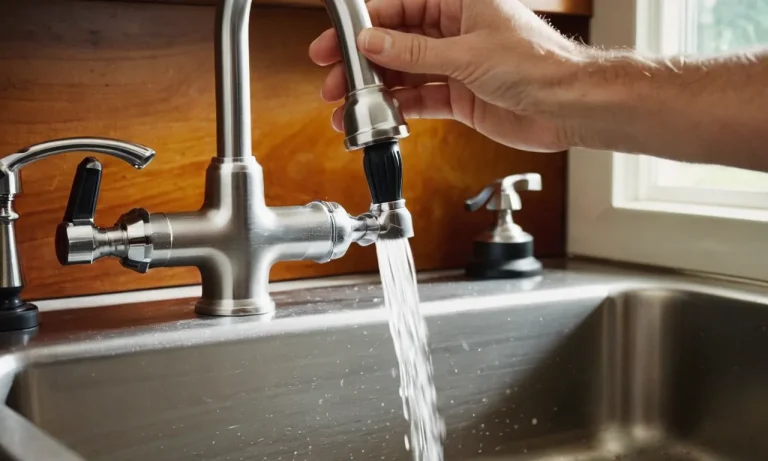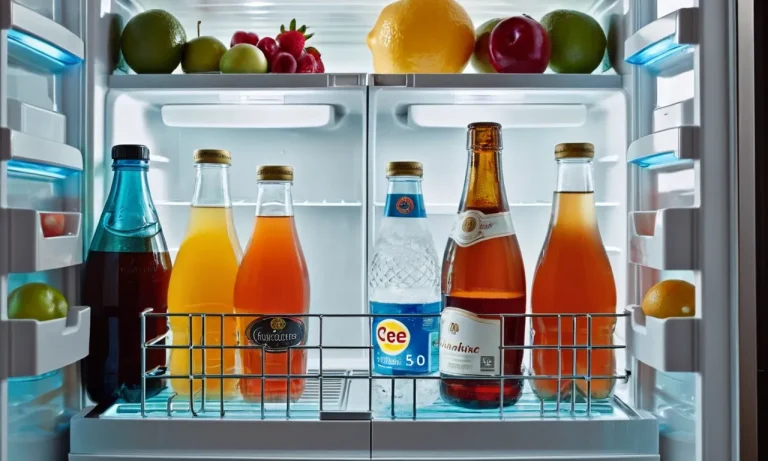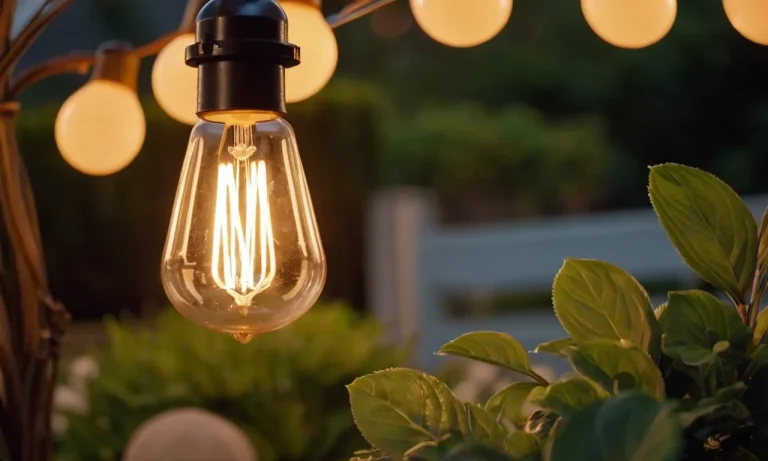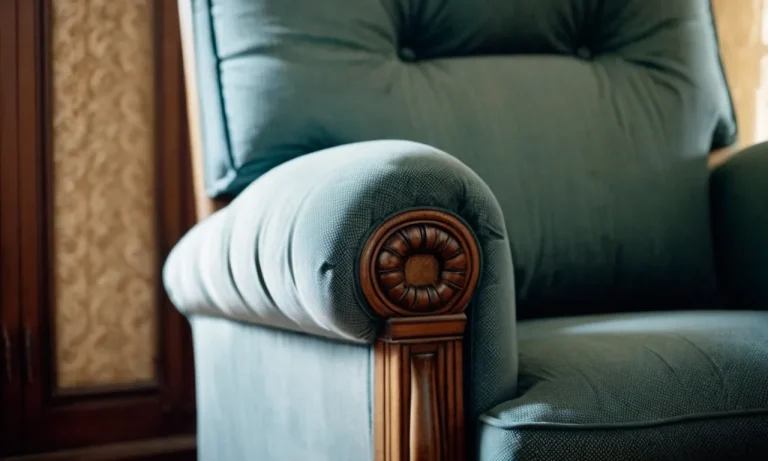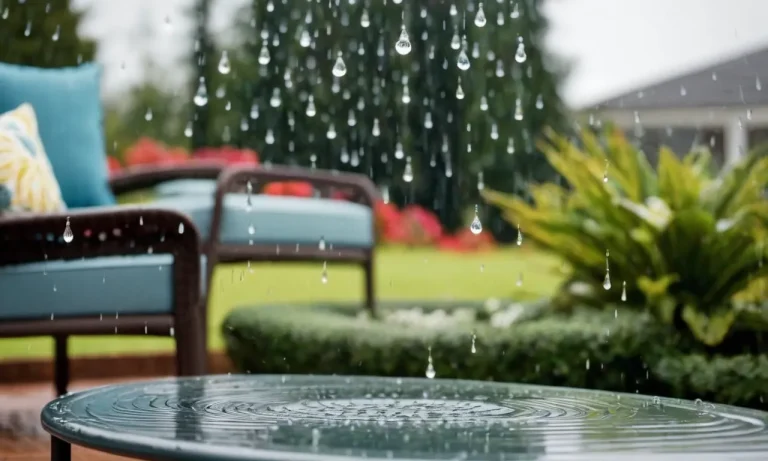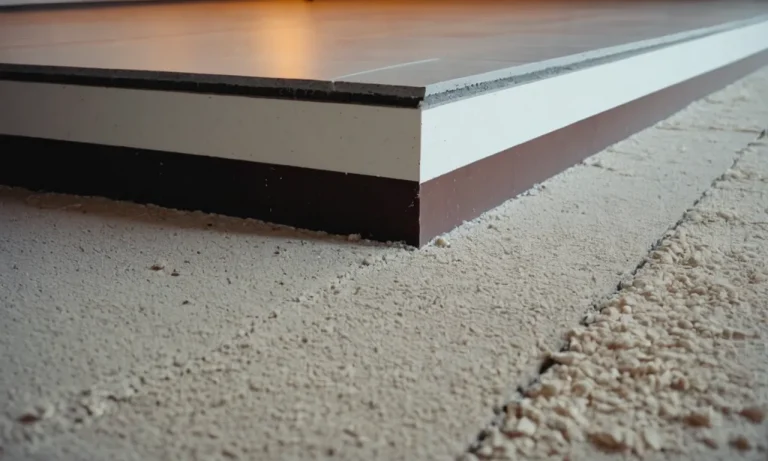The Best Time To Paint Indoors
Painting the interior of your home can instantly refresh the look and feel of a room. But before you break out the paint brushes and tarps, it’s important to pick the optimal time to paint indoors.
If you’re short on time, here’s a quick answer to your question: the best time to paint indoors is during the warmer months when you can open the windows to allow for maximum ventilation and drying time.
In this comprehensive guide, we’ll cover everything you need to know about choosing the ideal time for your next indoor painting project. You’ll learn tips on temperature, humidity, ventilation, drying time, odors, and minimizing disruption to your daily routine.
How Temperature Impacts Painting
When it comes to painting indoors, the temperature plays a crucial role in achieving the best results. The right temperature can affect the drying time, adhesion, and overall quality of the paint job. Understanding how temperature impacts painting can help you choose the best time to paint and ensure a successful project.
Choose Warmer Weather for Painting Indoors
Painting in warmer weather is generally recommended for indoor projects. Warmer temperatures help the paint dry more quickly and evenly, allowing you to complete the project in a timely manner. Additionally, warm temperatures can enhance the adhesion of the paint to the surface, resulting in a longer-lasting finish.
It’s important to note that excessively high temperatures can also pose challenges. Extremely hot conditions can cause the paint to dry too quickly, leading to issues such as brush marks, streaks, and uneven coverage.
To avoid these problems, it’s best to choose a day with a moderate temperature, ideally between 70°F and 85°F, for indoor painting.
Avoid Extreme Temperatures
Extreme temperatures, whether hot or cold, can negatively affect the painting process. In very cold temperatures, the paint may thicken and become harder to work with. It may also take longer to dry, prolonging the completion time of your project.
On the other hand, painting in excessively hot temperatures can cause the paint to become too thin, resulting in drips and sagging.
For optimal results, it’s recommended to avoid painting indoors when the temperature is below 50°F or above 90°F. If you need to paint during these extreme temperature ranges, consider using temperature-specific paints or additives that can help overcome the challenges posed by the weather.
Consider Insulation When Painting in Colder Months
Painting indoors during colder months requires additional consideration, especially if the room is not well-insulated. Cold temperatures can affect the drying time of the paint, potentially leading to extended curing times and a longer wait before you can fully utilize the painted space.
If you’re planning to paint in a room that lacks proper insulation, it’s a good idea to take steps to increase the temperature in the space. This can be done by using space heaters or ensuring that the room is properly sealed to prevent drafts.
By creating a warmer environment, you can help optimize the drying process and achieve the best results.
Manage Humidity When Painting Indoors
When it comes to painting indoors, managing humidity is key to achieving the best results. Humidity can significantly affect the drying time of paint and the overall finish of your project. By understanding how to control humidity levels, you can ensure a smooth and successful painting process.
Lower Humidity Speeds Up Drying Time
One of the main reasons why humidity matters when painting indoors is its impact on drying time. High humidity can prolong the drying process, causing the paint to remain tacky for longer periods. On the other hand, lower humidity can speed up drying time, allowing you to move on to the next coat or finish your project sooner.
In fact, studies have shown that a drop in humidity levels can reduce the drying time of paint by up to 50%. This means that if you’re looking to complete your painting project quickly, it’s best to paint when the humidity is low.
Use Dehumidifiers to Reduce Moisture
If you’re painting in an area with high humidity, using a dehumidifier can help reduce moisture levels and create an optimal environment for painting. Dehumidifiers work by removing excess moisture from the air, effectively lowering the humidity in the room.
When using a dehumidifier, make sure to follow the manufacturer’s instructions and set it to the appropriate humidity level for painting. This will help speed up the drying process and ensure a smooth and even finish.
Avoid High Humidity Months for Painting
Another important consideration when painting indoors is the time of year. Certain months tend to have higher humidity levels, which can make it more challenging to achieve the desired results. It’s generally recommended to avoid painting during the rainy season or in months with high humidity.
By planning your painting projects during months with lower humidity, you can minimize the risk of issues such as paint cracking, bubbling, or uneven drying. Additionally, painting during drier months can also help your paint adhere better to the surface, resulting in a longer-lasting finish.
For more information on managing humidity when painting indoors, you can visit websites like paintingcontractor.com or familyhandyman.com which provide valuable tips and insights.
Ensure Proper Ventilation for Faster Drying
When painting indoors, it is crucial to ensure proper ventilation in order to facilitate faster drying of the paint. Proper ventilation helps to remove the fumes and moisture from the paint, allowing it to dry more quickly and evenly. There are several ways to achieve this:
Open Windows Allow Fresh Airflow
One of the simplest ways to ensure proper ventilation while painting indoors is to open windows. This allows fresh air to flow into the room and helps to remove any fumes or odors associated with the paint.
Additionally, the fresh air helps to speed up the drying process by providing a constant flow of air.
Use Fans to Circulate Air
Using fans can also be an effective method to improve ventilation and speed up the drying process. By placing fans strategically in the room, you can create a circulation of air that helps to remove fumes and moisture from the paint.
This can be particularly useful in rooms without windows or in areas where the airflow is limited.
Consider Adding Vents for Continued Airflow
In some cases, it may be beneficial to consider adding vents to the room to ensure continued airflow. Vents can be installed in walls or ceilings to provide a constant supply of fresh air and help in removing fumes and moisture.
This can be especially helpful in rooms that are frequently painted or in areas where ventilation is a challenge.
It is important to note that proper ventilation not only facilitates faster drying but also helps to create a healthier environment by reducing the concentration of paint fumes. This can be particularly important for individuals with respiratory conditions or sensitivities to chemicals.
Account for Adequate Drying Time
When painting indoors, it is important to account for adequate drying time between coats of paint. Rushing the process can result in a sloppy finish and may cause the paint to not adhere properly. To ensure a professional-looking paint job, it is recommended to allow at least 2-4 hours between coats.
Allow at Least 2-4 Hours Between Coats
Allowing sufficient time for the paint to dry between coats is crucial for achieving a smooth and even finish. This allows each layer of paint to dry properly before applying the next one. If you apply a new coat of paint too soon, it can cause the previous coat to smudge or blend with the new one, resulting in an uneven appearance.
By waiting 2-4 hours between coats, you give the paint enough time to dry and cure, ensuring that each layer is properly set before moving on to the next. This will help you achieve a more professional-looking result and reduce the chances of having to touch up or redo sections of your painted surface.
Let Paint Fully Cure Before Furniture Goes Back
While the paint may feel dry to the touch after a few hours, it is important to note that it may not be fully cured. Curing time refers to the time it takes for the paint to reach its maximum hardness and durability.
This process can take anywhere from a few days to a few weeks, depending on the type of paint used and the conditions in which it is drying.
Before moving furniture back into a freshly painted room, it is recommended to wait until the paint is fully cured. This will prevent any accidental smudges or damage to the paint job. Check the paint can or manufacturer’s instructions for specific drying and curing times, as they can vary depending on the type of paint and environmental factors.
Schedule Painting to Avoid Weekend Plans
When planning an indoor painting project, it’s important to consider your schedule and any upcoming events or plans. Painting can be a time-consuming process, and it’s best to allow yourself ample time to complete the project without feeling rushed or stressed.
One way to avoid unnecessary stress is to schedule your painting project in a way that doesn’t interfere with your weekend plans. Weekends are often a time for relaxation and spending time with family and friends, so it would be a shame to spend your free time working on a painting project instead.
Consider scheduling your painting project during the weekdays or on a day when you have minimal commitments. This will allow you to focus on the task at hand without feeling rushed or distracted. Plus, you’ll have the satisfaction of completing the project before the weekend rolls around.
Minimize Paint Odors and Off-Gassing
When it comes to painting indoors, one of the main concerns is the strong smell that often accompanies fresh paint. The odor can be overwhelming, especially in smaller spaces or rooms with poor ventilation.
However, there are several strategies you can implement to minimize paint odors and off-gassing, ensuring a more pleasant painting experience.
New Paint Smell Dissipates Over Time
One of the most important things to remember is that the new paint smell will dissipate over time. As the paint dries and cures, the volatile organic compounds (VOCs) responsible for the strong odor will gradually evaporate.
Opening windows and doors to allow for proper ventilation can help speed up this process. Additionally, choosing low or zero VOC paint options can significantly reduce the intensity and duration of the smell.
According to the Environmental Protection Agency (EPA), volatile organic compounds are chemicals that have a high vapor pressure at room temperature, meaning they easily evaporate into the air. These compounds can have short-term and long-term health effects, so it’s important to take measures to minimize exposure.
Run Air Purifiers to Help Filter Out Fumes
Another effective way to minimize paint odors and off-gassing is by running air purifiers in the freshly painted area. Air purifiers equipped with activated carbon filters can help trap and eliminate VOCs from the air, reducing the paint smell.
It’s recommended to run the air purifiers continuously for a few days or until the smell dissipates to ensure maximum effectiveness.
When choosing an air purifier, look for models that are specifically designed to remove VOCs. Some popular brands that offer air purifiers with VOC filters include Honeywell, Blueair, and Coway.
Keep Pets Out of Freshly Painted Rooms
While it may be tempting to let your furry friends roam freely in the house, it’s best to keep them out of freshly painted rooms. Pets have a much more sensitive sense of smell compared to humans, and the strong paint odor can be overwhelming and potentially harmful to them.
Additionally, pets may accidentally come into contact with wet paint, leading to messy paw prints and potential damage to your newly painted surfaces.
If you have pets, it’s a good idea to find a safe and comfortable place for them to stay while you’re painting and until the paint has fully dried and the odors have dissipated. This could be a separate room, a designated pet area, or even a temporary stay at a friend or family member’s house.
By following these tips, you can minimize paint odors and off-gassing, creating a more pleasant and healthier environment for both you and your pets. Remember to prioritize proper ventilation, consider using low or zero VOC paints, run air purifiers, and keep your furry friends away from freshly painted areas.
Happy painting!
Reduce Disruption to Your Routine
When it comes to painting indoors, minimizing disruption to your daily routine is crucial. Nobody wants to deal with constant interruptions and a messy living space for an extended period of time. Here are some tips to help you reduce the disruption caused by an indoor painting project.
Ask Family Members to Give You Space
One way to reduce disruption during indoor painting is to ask your family members to give you some space. By letting them know in advance about your painting plans, you can coordinate schedules and find a time when everyone can temporarily relocate to another part of the house.
This will allow you to paint without distractions and minimize the chances of paint getting on their belongings.
Move Freestanding Furniture Yourself
If you have freestanding furniture in the room you’re planning to paint, it’s a good idea to move it yourself before the project starts. This will save you time and effort, as well as prevent any accidental damage to your furniture.
You can ask a friend or family member to help you with the heavy lifting, making the process quicker and easier.
Hire Movers for Built-In Furnishings
For built-in furnishings such as cabinets or bookshelves, it’s best to hire professional movers to handle the job. Built-in furniture can be heavy and difficult to move without causing damage to the walls or the furniture itself.
Hiring experts will ensure that the furniture is moved safely and efficiently, minimizing disruption and potential risks during the painting process.
By following these tips, you can significantly reduce disruption to your routine and make the indoor painting process smoother and more efficient. Remember, planning and preparation are key to a successful painting project!
Conclusion
By keeping these factors in mind and choosing the ideal time of year to paint, you can ensure your interior painting project goes smoothly from start to finish. The warmer months with lower humidity, good ventilation, and time for proper drying will set you up for indoor painting success without disrupting your daily activities.
Follow these seasonal painting tips, and you’ll be able to transform any room with a fresh coat of paint – without having to worry about less than ideal painting conditions getting in the way.


